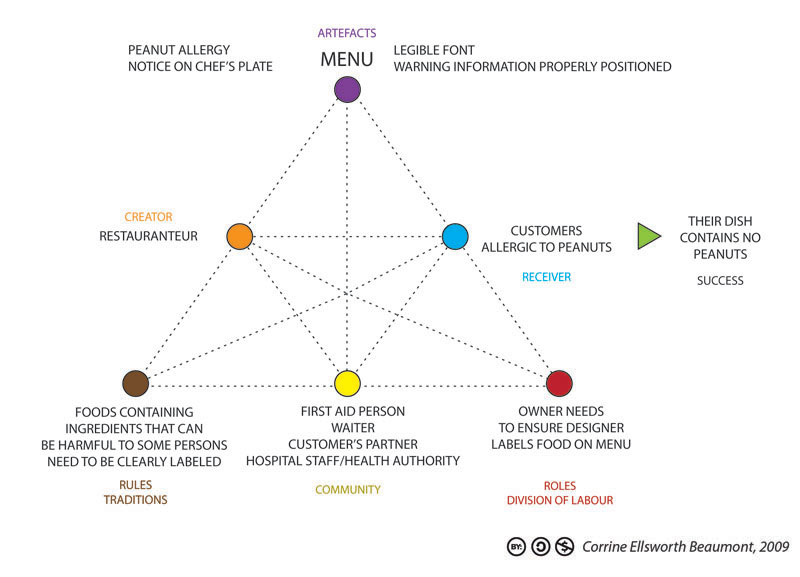Activity Theory is a complicated theory that is based on the study of an activity. Subject(s), or the person/people involved in the action, are motivated by an object (or objective). These actions are mediated by artifacts (e.g. instruments, signs, language, and machines) and use operations (routinized and unconscious practices). In activity theory, people create the context rather than being influenced by it.
Activity theory studies how the subjects work towards an object. Subjects are influenced by their operations and artifacts, and while the object may be achieved by all groups the outcome may be different.
Does your head hurt yet? Watch this video, which provides a concise summary and example of Activity Theory:
Still confused? Try reading about activity theory from another perspective…design. Dr. Corinne Beaumont’s blog (2009) explains how activity theory can be used to design a menu that prevents customers with nut allergies from being exposed to peanuts (For those who like to get to the point, when you click on the link scroll down and read Case #1: The Food Allergy Customer).
Using Activity Centred Design for Innovation
Stop and Reflect:
Take a moment to think about how you might use activity theory in your own situation. For those who are classroom teachers, could this help you better understand your students’ perspectives? What about those of you working in instructional design or program planning in the educational or corporate field? Would it aid you in understanding your colleagues or clients?


Thank you for the simple explanation of Activity Theory. I would like a clearer explanation when I study the learning diagram, I notice that there’s a repetition from the pedagogic activity system example given of the following concepts:
Subject: teachers and learners
Tools: curriculum, and staff – which staff are you referring to and what are the roles?
Rules: curriculum
Community: teachers and learners,
Division of labour: teachers, leaners and support staff
Please demonstrate how to apply activity theory to the grade 12 accounting learners who are preparing to write the final examination using the learning diagram including the roles of each concept.